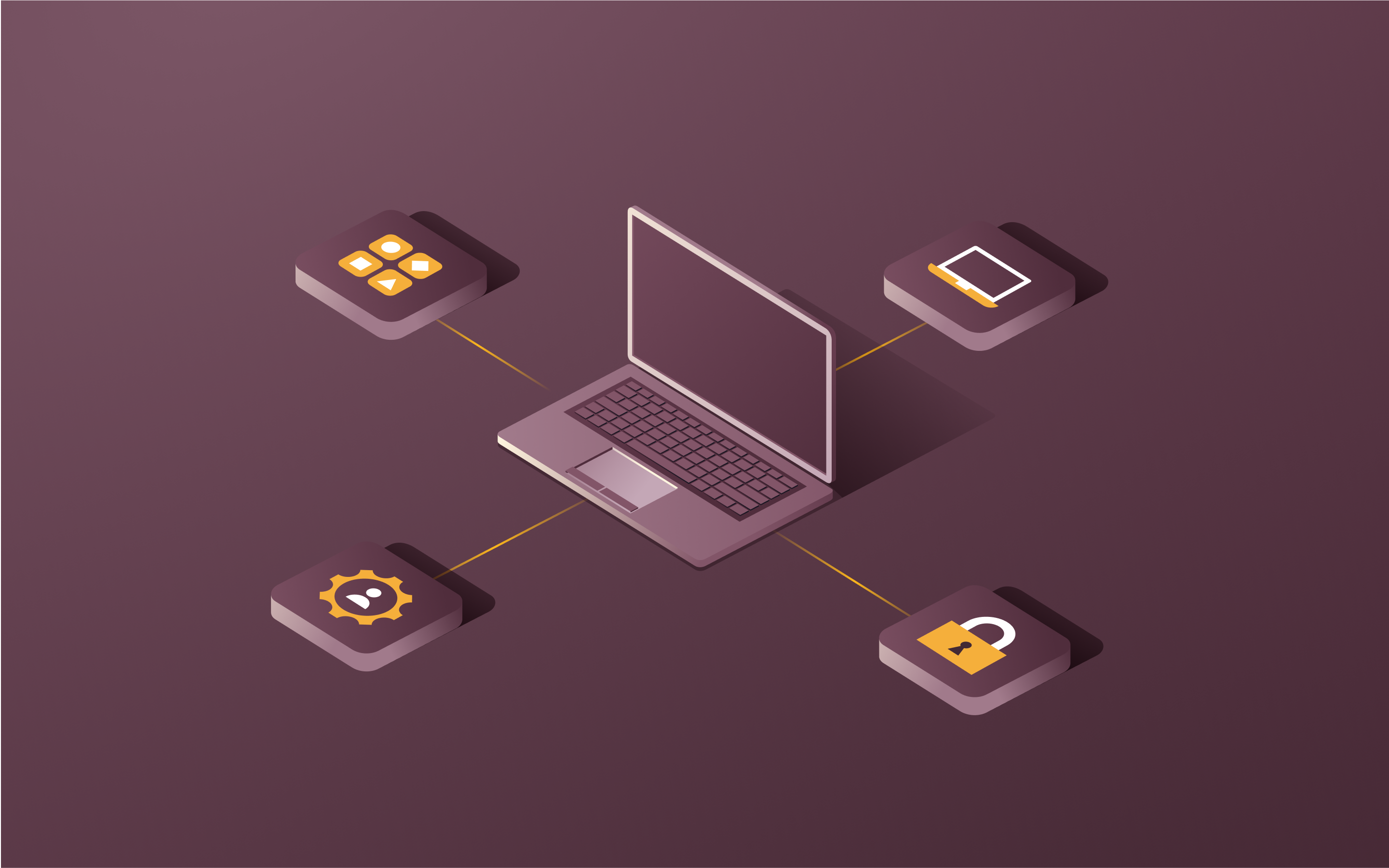A guide to attribute-based access control (ABAC)

ABAC is an attribute-driven access control methodology that enables organizations to enforce context-aware security policies, ensuring the right people have access to the right resources under the right conditions.
Attribute-based access control (ABAC) is not just another buzzword; it represents a fundamental shift in how organizations approach access control. By granting or denying access based on attributes associated with users, resources, actions, and the environment, ABAC enables organizations to create highly specific, context-aware access control policies that can adapt to changing business needs.
This piece provides more insight into ABAC, exploring its key concept, components, benefits, and challenges. We'll also compare ABAC to the more familiar role-based access control (RBAC) model, helping you understand when and why you might choose one over the other, or even consider a hybrid approach that combines the strengths of both methodologies.
What is attribute-based access control (ABAC)?
ABAC is an access control model that bases access decisions on the attributes of users (subjects), resources (objects), actions, and the environment. These attributes serve as the building blocks of access control policies, allowing for fine-grained, dynamic authorization that can adapt to changing circumstances.
Here’s a real-world scenario: Imagine a global consulting firm with a matrix organizational structure. With employees frequently switching between projects, teams, and locations, traditional access control quickly becomes unwieldy. Enter ABAC: by defining access policies based on attributes like project assignment, team membership, geographic location, and security clearance, the firm can ensure that employees have access to the right resources at the right time, no matter how often their roles change.
Attribute-based access control components
ABAC systems typically consist of four main components:
- Subject attributes: Characteristics that define the user or entity requesting access, such as job title, department, security clearance, and training certifications.
- Resource attributes: Properties that describe the resource being accessed, such as data classification, file type, creation date, and sensitivity level.
- Action attributes: The specific operation being requested, such as read, write, delete, or execute.
- Environment attributes: Contextual factors that may influence access decisions, such as time of day, location, device type, and network security level.
How does attribute-based access control work?
ABAC evaluates access requests by comparing the attributes of the subject, resource, environment, and action against the organization's predefined access control policies. Here's a step-by-step breakdown of the process:
- Attribute definition: The organization identifies and defines the relevant attributes for subjects, resources, environments, and actions. These attributes are stored in a central repository, such as a directory service or identity management system.
- Policy creation: Access control policies are created based on combinations of attributes. For example, a policy might state: Users with a security clearance level of 'Top Secret' can view 'Classified' documents during business hours from a secure network.
- Access request: When a user attempts to access a resource, the system captures the relevant attributes of the subject, resource, environment, and action.
- Policy evaluation: The ABAC system compares the captured attributes against the applicable access control policies to determine whether the request should be granted or denied.
- Access decision: Based on the policy evaluation, the ABAC system either denies or grants access to the requested resource. If access is granted, the user can perform the requested action on the resource.
The benefits of ABAC
ABAC offers several compelling advantages over traditional access control models. Let's explore some common use cases and key benefits:
Fine-grained access control
ABAC enables organizations to define granular access policies based on a wide range of attributes. This allows for more precise control over who can access what resources under specific conditions. For example, a healthcare provider can use ABAC to ensure that only doctors with the appropriate specialization can access patient records related to their area of expertise. This helps to ensure compliance with HIPAA regulations.
Context-aware decision making
ABAC's ability to incorporate environmental attributes into access control decisions enables organizations to enforce context-aware security policies. This means that access privileges can be dynamically adjusted based on factors like time of day, location, or device type. For instance, a financial institution can restrict access to sensitive customer data outside of business hours or from untrusted networks, reducing the risk of unauthorized access.
Flexibility and scalability
ABAC policies are highly flexible and can be easily modified as business needs evolve. Instead of manually updating individual user permissions, administrators can simply adjust the attribute-based policies, and the changes will automatically apply to all relevant users and resources. This makes ABAC highly scalable, even in large, complex organizations.
ABAC examples
To illustrate how ABAC works in practice, let's consider a few real-world examples:
- Healthcare: In a hospital setting, ABAC can ensure that only nurses assigned to a specific ward can access patient records for that ward during their shift. This policy would consider attributes such as the nurse's role, assigned ward, and shift schedule, along with the patient's location and the time of day.
- Financial services: A bank can use ABAC to control access to customer financial data. For example, a policy might state that only account managers with a certain security clearance level can view customer transaction histories during business hours from a secure, company-owned device. This policy takes into account the employee's role, clearance level, the data classification, the time of day, and the device attributes.
- SaaS application: A cloud-based project management tool can implement ABAC to manage access to projects, documents, and features. For instance, a policy can specify that only project managers and assigned team members can view and edit project files, while external collaborators with a specific clearance level can only view and comment on specific documents during the project's active phase. The policy would consider attributes such as the user's role, project assignment, document sensitivity, collaboration status, and project lifecycle stage.
Limitations and challenges of ABAC
While ABAC offers significant benefits, it's essential to be aware of its potential limitations and challenges:
Complex policy creation and management
Defining and managing ABAC policies can be complex, especially in large organizations with diverse resources and user populations. It requires a thorough understanding of the relevant attributes and how they should be combined to create effective access control policies.
Difficulty in defining appropriate attributes
Identifying the right attributes to use in ABAC policies can be challenging. Organizations must carefully consider which attributes are most relevant and how they should be defined and assigned to users and resources.
Continuous maintenance and updates
As user roles, resource classifications, and business needs change, ABAC policies must be regularly reviewed and updated to ensure they remain effective and aligned with the organization's security requirements.
Scalability challenges
While ABAC is designed to be scalable, implementing it across a large, complex organization can be resource-intensive. It requires robust identity management and attribute provisioning processes to ensure that user and resource attributes are accurately maintained and kept up to date.
Role-based access control (RBAC) vs attribute-based access control (ABAC)
While ABAC offers many benefits, it's not always the right choice for every organization. In some cases, RBAC may be a better fit. Understanding the differences between ABAC and RBAC is essential for making an informed decision about which model to implement.
When to choose RBAC
RBAC is a well-established access control model that has been widely adopted across various industries. In RBAC, access rights are granted based on predefined roles, each of which is associated with a specific set of permissions. Users are assigned to one or more roles, and their access rights are determined by the permissions associated with those roles.
RBAC is particularly well-suited for organizations with relatively stable job functions and a clear hierarchy of roles and responsibilities. Some advantages of RBAC include:
- Simplicity: RBAC is relatively easy to understand and implement, as access rights are based on predefined roles rather than complex attribute-based policies.
- Efficiency: Managing access rights based on roles can be more efficient than managing individual user permissions, particularly in organizations with a large number of users.
- Auditability: RBAC provides a clear audit trail, as access rights are tied to specific roles, making it easier to track who has access to what resources.
However, RBAC also has some limitations. It can be inflexible in dynamic environments where user responsibilities and resource classifications frequently change. Additionally, RBAC may not provide the level of granularity needed to enforce fine-grained access control policies.
When to choose ABAC
ABAC is a flexible and dynamic access control model that is well-suited for organizations with complex data security requirements. Some key scenarios where ABAC may be a better choice include:
- Dynamic environments: If user responsibilities, resource classifications, and business needs frequently change, ABAC's attribute-based approach can provide the flexibility needed to adapt quickly.
- Fine-grained access control: If your organization requires highly specific, context-aware access control policies, ABAC's ability to combine multiple attributes can provide the necessary level of granularity.
Ultimately, the choice between RBAC and ABAC depends on the specific needs and characteristics of your organization. However, RBAC is generally considered the best way to manage access control for most organizations due to its widespread adoption and extensive tooling support.
Streamline access control management with Rippling
Implementing and managing ABAC can be challenging, especially for organizations with limited resources or expertise. That's where Rippling identity and access management (IAM) solution comes in.
Rippling IAM is designed to help organizations effortlessly manage user identities, automate user provisioning, and control access across all apps and devices—all from a single, unified platform. With Rippling, you can:
- Centrally manage user identities and attributes across your entire organization
- Define and enforce attribute-based access control policies with ease using Supergroups
- Automate user provisioning and deprovisioning based on HR triggers
- Monitor and audit access activity to ensure compliance and security
What sets Rippling apart is its unparalleled customization capabilities, which enable you to implement both ABAC and RBAC with ease. Rippling's platform offers custom attributes and custom fields, allowing you to define and manage access control based on your organization's unique needs and structure.
Moreover, Rippling's IAM solution is seamlessly integrated with its HRIS, ensuring that access control is always based on a single source of truth. This integration streamlines user management and reduces the risk of inconsistencies or errors in access control policies.
Supergroups allow you to create user groups based on attributes, relationships, and predefined categories, making it easy to assign and manage access rights. As user attributes change, their group memberships and access rights are automatically updated.
By leveraging Rippling's robust identity management capabilities, hyper-customization features, and intuitive policy creation tools, you can streamline your ABAC and RBAC implementations and ensure your access control stays both secure and flexible as your organization grows and changes.
Frequently asked questions
What are the main types of access control?
The four main types of access control are:
- Discretionary access control (DAC): Access is granted or restricted based on the discretion of the resource owner.
- Mandatory access control (MAC): Access is controlled by a central authority based on predefined security labels assigned to subjects and objects.
- Role-based access control (RBAC): Access is determined by the user's role or job function within the organization.
- Attribute-based access control (ABAC): Access decisions are based on a combination of attributes associated with the user, resource, action, and environment.
How is ABAC related to identity and access management (IAM)?
ABAC is a key component of modern IAM solutions. IAM systems are responsible for managing user identities, attributes, and access permissions across an organization. ABAC leverages the identity and attribute data stored in an IAM system to make dynamic access control decisions based on predefined policies.
Does Rippling support ABAC?
Yes, Rippling IAM solution provides a robust foundation for implementing ABAC within your organization. With Rippling, you can easily define and enforce attribute-based access control policies, automate user provisioning, and monitor access activity from a single, unified platform.
Schedule a demo with Rippling IT today
This blog is based on information available to Rippling as of September 19, 2024.
Disclaimer: Rippling and its affiliates do not provide tax, accounting, or legal advice. This material has been prepared for informational purposes only, and is not intended to provide or be relied on for tax, accounting, or legal advice. You should consult your own tax, accounting, and legal advisors before engaging in any related activities or transactions.





